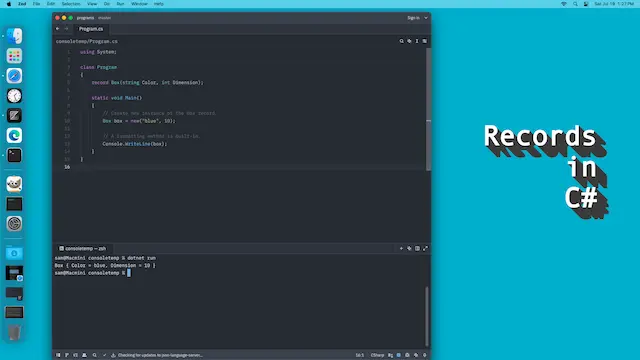When to Use Records in C#
Often when developing C# programs we have small classes that only have a couple fields or properties. For example, a Point may have just two fields—its coordinates. Do these types need an entire class, with a constructor? Or should we condense the logic and keep the program smaller?

With records, we can specify—in a single line—a class that has some fields. Each field has a type and a name. There are some limitations with records, however, so it is best to use them only when certain conditions are true. We can use records when a class:
Records, which are also available in Java, can define a class with different fields in a single line. They remind me of tuple classes in Rust as well. If I were developing a program in C# or Java, I would aspire to use records when adding types—this would help keep the code base smaller and easier to manage.